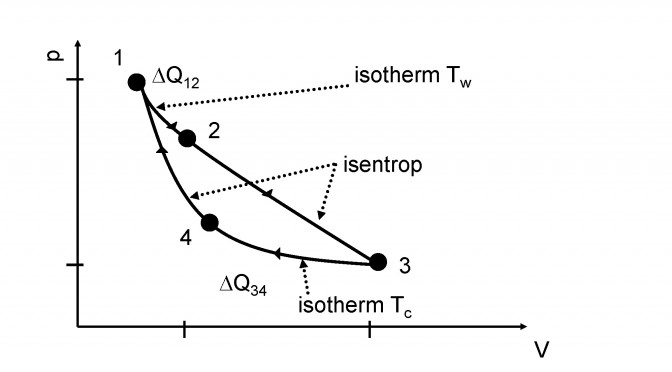Second law of thermodynamics
This unit provides insight into the energetic of the atmosphere and permits predicting of the direction of energy fluxes. The unit is fundamental to later explain tropospheric circulations of various sizes. It also permits us to answer questions that we couldn’t answer with the first law of thermodynamics alone (see volunteer task for an application).
Learning goal
After successful completion of this unit, students will be able to
- Apply the second law of thermodynamics to the atmosphere
- Apply the second law of thermodynamics to explain/describe meteorological reversible and irreversible processes
- Explain the direction of atmospheric processes
- Proof the direction of thermodynamic processes (graduate students)
Students’ Tasks
- Watch this video on the material
- Read chapter 2.6 to 2.6.3.7 (included) of Lectures in Meteorology
- Participate in the discussion channel of this unit on the discussion board
- ATM401 Answer the questions in this questionaire by Thursday 2359 AST. These questions guide you to take notes efficiently. ATM601/CHEM601 Write your summary in this form and answer the questions.
- Solve the problem tasks assigned at your class level in this Unit 4 applications.
- All: Submit the scanned solutions of the unit 4 applications to cmoelders@alaska.edu.
Supplemental material
If you want to take notes on the slides of the video, here is the file.
Worked example problem (optional)
Show that the 2nd law of thermodynamics can tell us when an equilibrium is reached between two bodies in an isolated system. This problem is the volunteer problem in the task sheet.
Hint: Think about what equilibrium temperature means. Start out arguing from an initial temperature to the final one that you have at equilibrium. What do you do to get there? How does this “doing” affect the entropy of the system? You can solve the problem by argumentation with the first and second laws of TD. I am not asking for a mathematical proof here (despite it is possible to prove it).
Watch the video for the solution
Supplemental material
Student self-assessment (optional)
Question 1
Question 2
Test your knowledge by taking in this multiple choice quiz.
Hints for solving the problems in the application sheet
Problem 2: Use unit area to get the volume. Make an assumption pressure change.
Problem 3: You need to do an integration over z. Look again at the part about the isothermal atmosphere for inspiration (unit 2).
FAQ
Q: The Guggenheim scheme seems to be a good tool to remember the state variables of internal energy, free energy, free enthalpy, but how do I use it?
A: Watch this video for an explanation how to use it.
Q: What’s the difference between an adiabatic and a diabatic process.
A: In an adiabatic process no heat is added, but the temperature can change nevertheless (e.g. by expansion, compression). A diabatic process means that heat is added or withdrawn (e.g. via solar radiation, radiative cooling, cooling by melting).
Q:
I have difficulties with the degrees of freedom for the dry air.
A: The dry mostly consist of diatomic gasses. Thus, we go with them. They have 3 degrees of motion – back and forth in x-,back and forth in y-, and back and forth in z-direction, plus rotation around their horizontal and vertical axis. This means f=5. Thus U=5/2 RT = cvT.
Q: The p-V concept is so confusing. I saw it in physics and thought I know it, but it now looks so different.
A: Watch this video
© 2019 Nicole Mölders | All rights reserved

